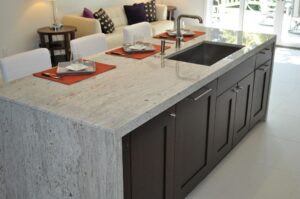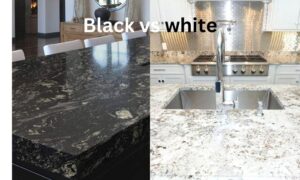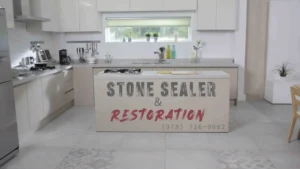White and Gray Granite Countertops: Which is Suitable for You?...
Read MoreWhat is Carrara Marble | A Comprehensive Guide
What is Carrara marble? Carrara marble is a type of high-quality, white or blue-gray marble that is highly sought after for its beauty and elegance. This exquisite natural stone is quarried in the Carrara region of Tuscany, Italy, where it has been prized for centuries for its use in sculpture and architecture. With its distinctive veining and luminous appearance, Carrara marble is widely used in various applications, including countertops, flooring, and wall cladding, adding a touch of luxury and sophistication to any space.
What is Carrara Marble Made Of?
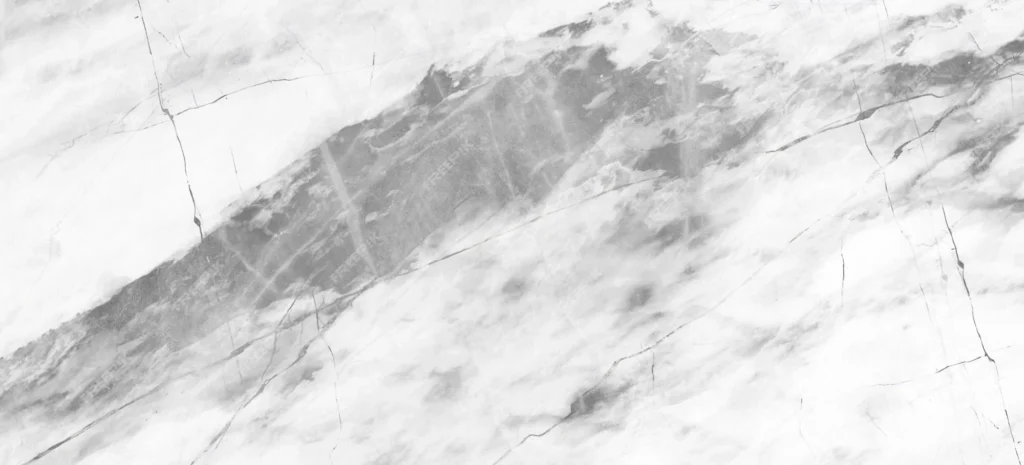
Carrara marble is a type of metamorphic rock that primarily consists of a mineral called calcite. Here’s a detailed breakdown of its composition:
Mineral Composition:
Calcite: Carrara marble is predominantly made up of calcite, a crystalline form of calcium carbonate. Calcite is responsible for the marble’s white or blue-gray coloration.
Dolomite: In some cases, Carrara marble may also contain dolomite, another carbonate mineral that can give the marble a slightly different appearance or texture.
Formation Process:
Carrara marble forms through the metamorphism of limestone, a sedimentary rock composed primarily of calcite. Over millions of years, geological processes such as heat and pressure cause the limestone to undergo recrystallization, transforming it into marble.
During this process, the calcite crystals in the original limestone are rearranged and compressed, resulting in the fine-grained texture and distinctive veining characteristic of Carrara marble.
Impurities and Veining:
While calcite is the main mineral in Carrara marble, it may also contain various impurities that contribute to its unique appearance.
The distinctive veining patterns seen in Carrara marble are often the result of mineral impurities such as clay, silt, or iron oxides that were present in the original limestone. These impurities create contrasting colors and textures within the marble, enhancing its visual appeal.
Variations in Composition:
Carrara marble is known for its variability in color and veining patterns, which can vary depending on factors such as the specific quarrying location and the depth from which the marble is extracted.
Additionally, the presence of different minerals and impurities can result in variations in the appearance and quality of Carrara marble, with some specimens exhibiting more pronounced veining or coloration than others.
Why is Carrara Marble Good?
Carrara marble is renowned for its timeless beauty and exceptional quality, making it a highly desirable material for various applications in architecture, design, and sculpture. Here are several reasons why Carrara marble is considered good:
Aesthetic Appeal: Carrara marble boasts a classic, elegant appearance characterized by its creamy white background with delicate grey veining. This natural beauty adds a touch of luxury and sophistication to any space, whether it’s used for countertops, flooring, or decorative accents.
Variety of Veining: One of the distinctive features of Carrara marble is its unique veining patterns. These veins range from subtle and fine to bold and dramatic, providing versatility in design options. Each slab of Carrara marble is distinct, ensuring that every installation is truly one-of-a-kind.
Timeless Elegance: Unlike some trendy materials that may go out of style, Carrara marble has stood the test of time. Its classic beauty transcends passing trends, making it a timeless choice that adds value to residential and commercial properties alike.
Durability: While marble is a softer stone compared to granite or quartz, Carrara marble is still durable enough to withstand everyday use in residential settings. With proper care and maintenance, Carrara marble countertops, floors, and other surfaces can retain their beauty for decades.
Versatility: Carrara marble is highly versatile, lending itself well to various design styles, from traditional to contemporary. It can be honed for a matte finish or polished to a high gloss, depending on the desired aesthetic. Additionally, Carrara marble can be used in both indoor and outdoor applications, offering flexibility in design choices.
Natural and Sustainable: As a natural stone, Carrara marble is environmentally friendly and sustainable. It is quarried from the mountains of Carrara, Italy, where strict regulations govern extraction practices to minimize environmental impact. Choosing Carrara marble supports sustainable practices and reduces the carbon footprint associated with synthetic materials.
Heat Resistance: Carrara marble exhibits excellent heat resistance, making it suitable for use in kitchens and bathrooms where hot pots, pans, and hair styling tools may come into contact with the surface. This heat resistance adds to the practicality and longevity of Carrara marble in residential settings.
Investment Value: Due to its beauty, durability, and timeless appeal, Carrara marble can increase the value of a property. Homeowners and designers often view Carrara marble as an investment in the long-term aesthetics and resale potential of a home or commercial space.
Types of Carrara Marble
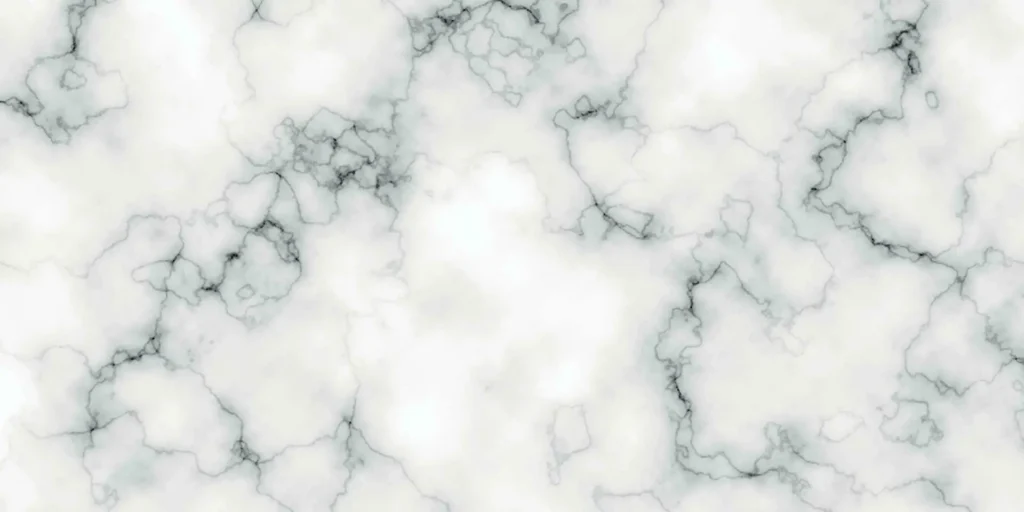
Statuario:
Description: Statuario marble is renowned for its pure white background and striking grey or gold veining. The veins in Statuario are typically thick and dramatic, creating a luxurious and elegant appearance.
Characteristics: High-quality, fine-grained, and often considered the most prestigious type of Carrara marble. It is commonly used in sculptures and high-end architectural applications.
Applications: Statuario marble is often chosen for flooring, countertops, and wall cladding in upscale residential and commercial spaces.
Calacatta:
Description: Calacatta marble is characterised by its bright white background and bold, dramatic veining. The veins in Calacatta are usually more prominent and can range in color from grey to gold.
Characteristics: High-quality with a distinctive appearance, Calacatta is often considered a luxury marble. It is prized for its elegance and is used in various design applications.
Applications: Calacatta marble is commonly used in countertops, marble backsplash, and floorings in kitchens and bathrooms. It is also favoured in sculptures and decorative elements.
Applications of Carrara Marble:
Flooring: Carrara marble, including Statuario and Calacatta, is popular for flooring in high-end residential and commercial spaces. The clean and elegant look of the marble adds a touch of luxury to floors.
Countertops: Statuario and Calacatta marble are frequently used for countertops in kitchens and bathrooms. The bright white background and distinct veining create a sophisticated and timeless aesthetic.
Wall Cladding: The smooth and polished surface of Carrara marble makes it a popular choice for wall cladding in both interior and exterior applications. It adds a touch of opulence to walls.
Sculptures: Due to its fine quality and aesthetic appeal, Carrara marble, especially Statuario, has been historically used for creating sculptures. The clean white surface allows for intricate detailing.
Decorative Elements: Carrara marble is often utilized for creating decorative elements such as fireplace surrounds, columns, and ornamental details in architecture. Its versatility makes it suitable for various design applications. If you want professional guidance then Stone Sealer Restoration is best in business.
Advantages of Using Carrara Marble
Aesthetic Appeal: Carrara marble is celebrated for its stunning natural beauty. It features a predominantly white background with delicate, gray veining running through it, creating an exquisite and sophisticated appearance. The subtle variations in color and veining patterns add depth and character to any space, making it a popular choice for both classic and contemporary designs.
Versatility: One of the greatest advantages of Carrara marble is its versatility. It can be used in various applications, including countertops, flooring, wall cladding, backsplashes, and even sculptural elements. Its timeless elegance complements a wide range of design styles, from traditional to modern, making it a versatile choice for residential and commercial projects alike.
Durability: Despite its elegant appearance, Carrara marble is surprisingly durable. When properly maintained and sealed, it can withstand daily wear and tear in high-traffic areas without losing its luster or beauty. It is resistant to heat, making it an ideal choice for kitchen countertops where hot pots and pans may be placed. However, it is important to note that marble is a softer stone compared to granite or quartz, so it may be more prone to scratching and etching.
Natural Variation: Each slab of Carrara marble is unique, featuring its own distinct veining patterns and shades of white and gray. This natural variation adds character and visual interest to any space, ensuring that no two installations are exactly alike. Designers and homeowners appreciate the authenticity and individuality that Carrara marble brings to their projects, creating a sense of luxury and exclusivity.
Timeless Elegance: Carrara marble has stood the test of time, gracing iconic buildings, monuments, and sculptures throughout history. Its timeless elegance transcends trends, making it a classic choice that never goes out of style. Whether used in a historic restoration project or a contemporary luxury residence, Carrara marble adds a touch of sophistication and refinement that enhances the overall aesthetic appeal of any space.
Ease of Maintenance: While Carrara marble does require regular maintenance to preserve its beauty and integrity, caring for it is relatively straightforward. Routine cleaning with mild soap and water, along with periodic sealing, helps to protect the surface from stains, moisture, and etching. With proper care, Carrara marble can maintain its pristine appearance for years to come, ensuring long-lasting beauty and value.
Luxurious Feel: Beyond its visual appeal, Carrara marble also offers a luxurious tactile experience. Its smooth, polished surface feels cool to the touch, adding a sense of luxury and refinement to any space. Whether used in a bathroom vanity or a grand staircase, Carrara marble exudes an air of opulence that elevates the overall ambiance of the room.
Conclusion
Carrara marble stands as a symbol of enduring beauty and craftsmanship in the world of design and construction. Its distinctive aesthetic appeal, marked by the interplay of white and gray tones, continues to captivate architects, designers, and enthusiasts alike. Beyond its visual allure, the geological and historical significance of Carrara marble adds an extra layer of fascination to this natural stone. Feel free to contact us for any type of services or query like what is carrara marble.
FAQs
Q1: What Is Carrara Marble?
A1: Carrara Marble is a high-quality, white or blue-grey marble quarried from the Carrara region in Tuscany, Italy. It is renowned for its elegant appearance and has been used in various sculptures and buildings throughout history.
Q2: What Gives Carrara Marble Its Unique Characteristics?
A2: Carrara Marble is primarily composed of calcite, which gives it its distinctive white color with grey or blue-grey veins. The natural variations in the stone contribute to its aesthetic appeal.
Q3: How Is Carrara Marble Formed?
A3: Carrara Marble is formed through the metamorphism of limestone. Over millions of years, heat and pressure cause the limestone to recrystallize into the beautiful and durable marble we know as Carrara.
Q4: What Are The Common Applications Of Carrara Marble?
A4: Carrara Marble is widely used in architectural and sculptural applications. It’s commonly found in countertops, flooring, wall cladding, and various decorative elements due to its timeless beauty and classic appearance.
Q5: Is Carrara Marble Suitable For Kitchen Countertops?
A5: Yes, Carrara Marble is often used for kitchen countertops. However, it’s important to note that marble is softer than some other natural stones, like granite, so it may be more prone to scratches and stains. Proper sealing and maintenance are recommended.
Q6: How Does Carrara Marble Differ From Other Types Of Marble?
A6: Carrara Marble is distinct for its predominantly white color and subtle veins. It differs from other marbles in terms of its origin and appearance. Each marble variety has unique characteristics based on the minerals present during its formation.
Our Services
Our Recent Post
Black And White Granite Countertops: Which Is Right For You?
Black And White Granite Countertops: Which Is Right For You?...
Read MoreElevate Your Countertop Kitchen Decor with Marble or Granite
Elevate Your Countertop Kitchen Decor with Marble or Granite When...
Read MoreTile And Grout Cleaning Services
Tile and grout cleaning services by Stone Sealer Restoration -...
Read More
